Panasonic TX-65GZ1000 Review
Panasonic TX-65GZ1000 Review
An outstanding premium OLED screen from Panasonic
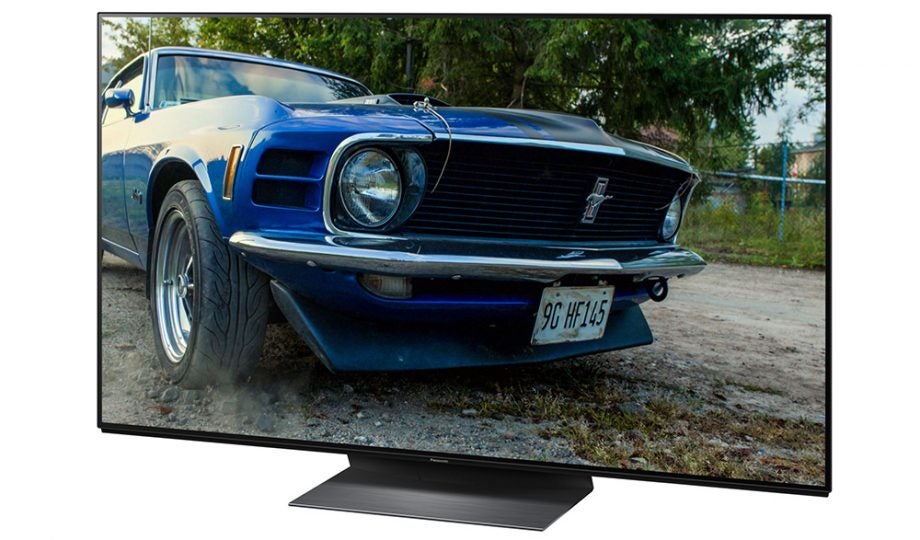
Verdict
Considering the GZ1000 isn’t even Panasonic’s top line OLED panel, its excellent performance should draw the attention of many prospective buyers. It combines outstanding image processing with a refreshingly sensible approach to HDR that only Philips TVs can match. After the GX800, the GZ1000 shows Panasonic operating at an impressive level.
Pros
- Catch-all HDR support - HDR10, HLG, Dolby Vision and HDR10+
- Outstanding SDR & HDR performance
- Intuitive smart platform
Cons
- You’ll want an external Dolby Atmos sound system
- Bulkier than some OLED screens
- Ugly remote control
Key Specifications
- Review Price: £2599
- 4K OLED UHD TV with Multi-HDR support
- Dolby Atmos
- Panasonic Home smart platform
- Freeview Play
The GZ1000s (TX-55GZ1000, TX-65GZ1000) are similar to the Panasonic OLEDs above them in terms of features, although there’s no specific Dolby Atmos speaker attached. They do, however, continue Panasonic’s welcome decision to have multi-HDR support in Dolby Vision and HDR10+, and pack in the HCX Pro Intelligent Processor.
The TX-65GZ1000 is Panasonic’s mainstream OLED proposition for 2019. Also available in 55-inch guise, it sits amid the GZ950, which is essentially a cosmetic variation, and the audio-enhanced GZ1500, and is the telly many will want to shortlist if the no-compromise flagship GZ2000 is just too over-specified.
Related: Panasonic’s 2019 4K HDR and HD TV lineup explained
Panasonic TX-65GZ1000 design and build – A little bit bulky for an OLED screen, it comes with a substantial set of connections
Nothing if not substantial, the back panel seems primarily devoted to electronics and audio. Consequently, the wafer-thin glass represents only approximately a third of the profile.
That said, the front-facing design of the GZ1000 is smart, with the panel parked on a centralised metallic pedestal.
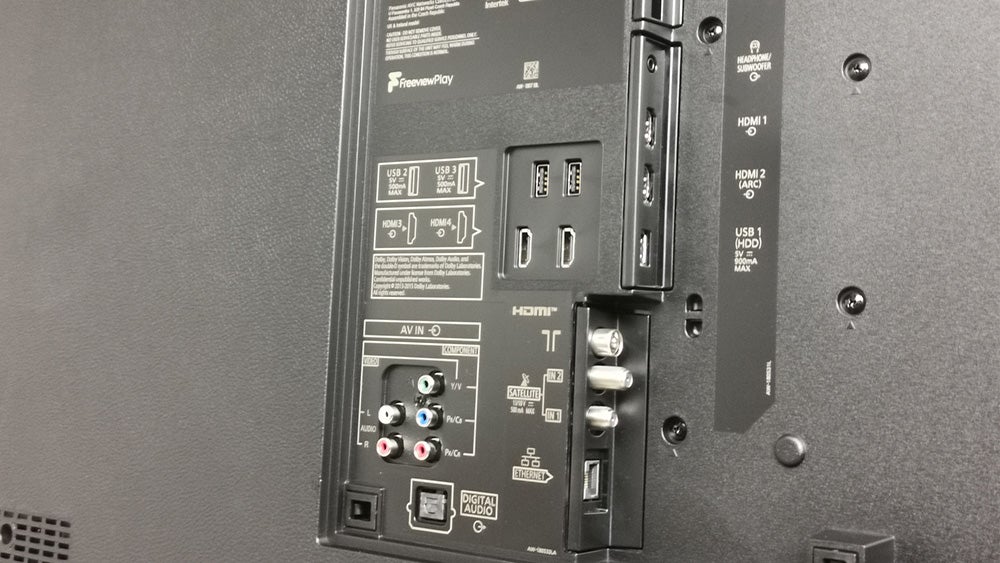
Connections comprise four v2.0 HDMIs, bolstered by an ALLM (Auto Low Latency) game mode for Xbox One X players. There are three USB inputs, component and phono AV inputs, a digital audio optical out and Ethernet, to support Wi-Fi and Bluetooth.
The terrestrial aerial input feeds a Freeview play tuner, while twin satellite inputs are available for those who prefer a dish connection.
Related: HDMI 2.1 – What you need to know
Panasonic TX-65GZ1000 features and usability – Comprehensive streaming support makes for an appealing set of smart features
Star turns include the brand’s lauded HCX Pro intelligent processor, all important multi-HDR support (HDR, HLG, HDR10+ and Dolby Vision) and built-in Dolby Atmos.
Smart connectivity is similarly comprehensive. The GZ1000 runs v4.0 of Panasonic’s Home connected platform. Awkwardly known as My Home Screen, it doesn’t offer the most elaborate connected UX, but it’s powerful and, more importantly, easy to live with.
By default, Home the launches with three circular buttons designated Devices, Apps and Live TV. The former takes you to all your connected inputs, as well as those on your local network. Our GZ1000 identified both Plex and TwonkyMedia servers, as well as as a NAS (network-attached storage) and HD Homerun tuner.

Streaming service support is comprehensive. There’s Netflix, Amazon Prime Video, YouTube, Rakuten.TV, plus all the Freeview Play regulars, including BBC iPlayer, ITV Hub, All4, My5, UKTV Play and CBS catch-up. There are other apps, but you’ll probably never use them.
You can easily customise those Home buttons by pinning services or inputs as required. For example we pinned Netflix, YouTube and Amazon, to offer speedy access to OTT (over-the-top streaming services) content.
Finally, a dedicated button on the remote drops down the Freeview Play Discovery bar. This includes catch-up players, box sets and curated content. Overall family usability is excellent.
Panasonic TX-65GZ1000 performance – Outstanding picture quality whether it’s HDR or SDR images
Lush, dynamic, and as colour-rich as a panther chameleon at Mardi Gras, the GZ1000 proves a poster boy for HDR OLED.
The colour depth and rich tonality of the panel is often jaw-dropping. UHD might hog the headlines, but one of the most important jobs of a 4K HDR OLED panel is to present HD SDR (standard dynamic range) in a way that’s proportional yet exploits the benefits of UHD technology. The GZ1000 gets this exactly right.
Related: OLED vs QLED − Television technology’s battle royale
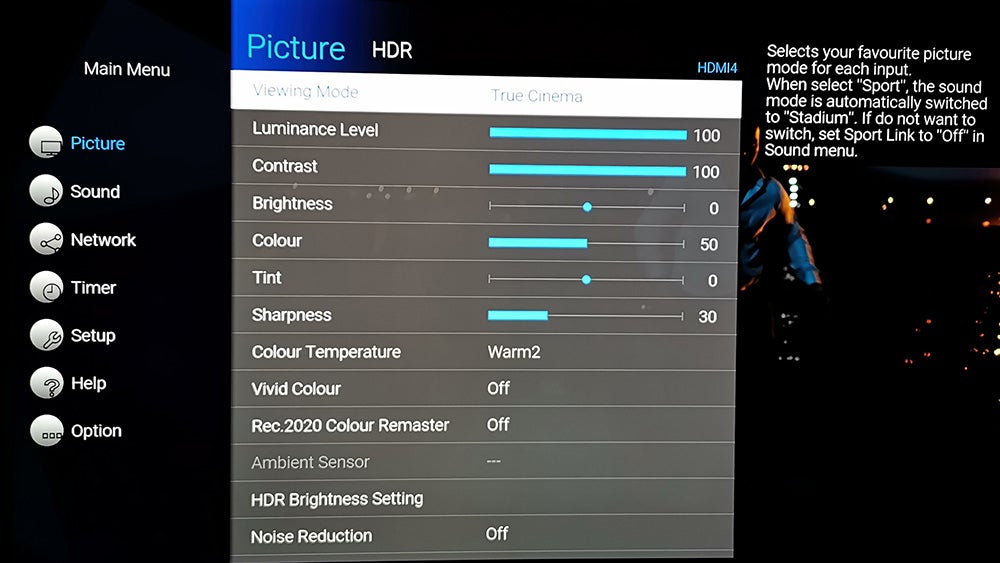
Picture presets comprise Dynamic, Normal, True Cinema, Cinema, Sport, THX Cinema, THX Bright Room, Custom and Professional 1 and Professional 2.
For most types of content, Normal works best. With Vivid Colour engaged, coupled to high levels of average brightness, it makes even banal daytime TV look a million bucks – skin tones, textiles and bright colours all jump from the screen.
Helpfully, you can customise which image presets appear when you press the Picture button on the rather clunky IR remote control. A full list of image presets can be checked or unchecked according to preference.
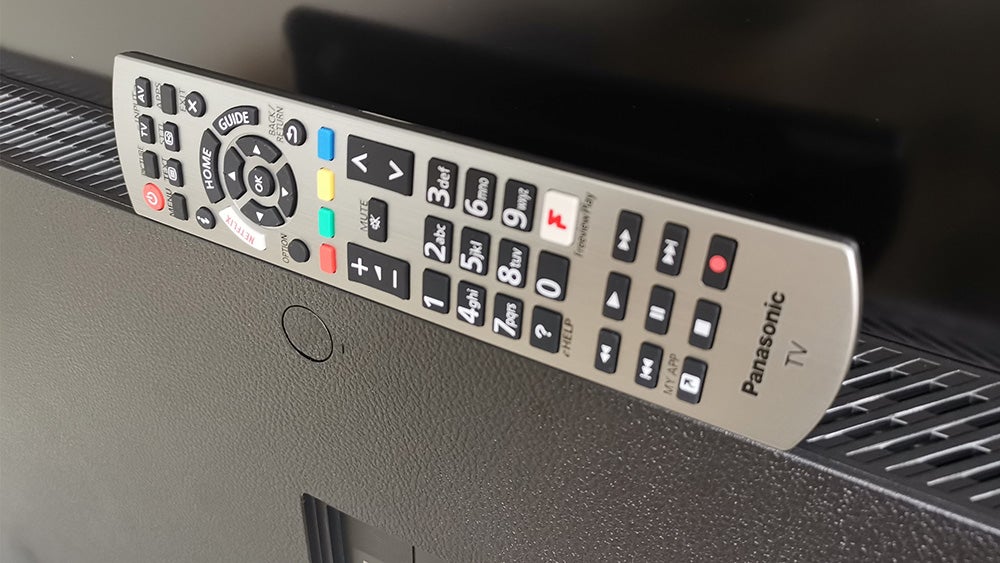
Performance naturally varies between viewing modes. The default panel luminance for Normal mode is set at 60%, but this drops to just 30% in True Cinema and THX modes. The latter are too dim to give satisfactory results in rooms with moderate or high levels of ambient light.
Unsurprisingly, Dynamic uses every trick in the picture processing book to create a high-impact image. Panel luminance is ramped up, sharpness cranked to unsafe levels, and there’s all the contrast you can handle. We should probably tut out loud, but frankly this set is just too much fun with garish content. If you’re offering Dynamic, you might as well do it ludicrously well.
The screen’s 4K detail delivery is outstanding and its HDR performance always on the right side of satisfying. The claustrophobic shadowed interiors and deep dive sequences in Hunter Killer (UHD Blu-ray) exhibit almost three-dimensional depth.
The fact that the set offers dynamic metadata support for both Dolby Vision and HDR10+ is probably more important than any specific performance benchmark, but the measurements are impressive.
Related: What is HDR10+?
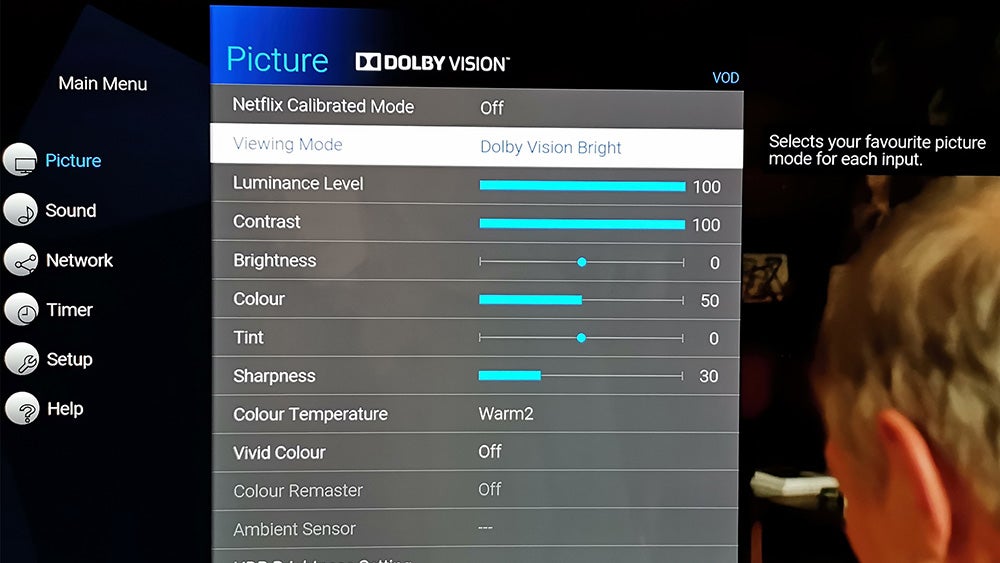
For the best HDR pop, opt for the Normal picture preset. We measured over 736 cd/m2 (aka nits) with a standard 10% test window, but in excess of 900 cd/m2 when we dropped that down to 5%, and the latter is more reflective of the kind of fleeting specular highlights that normally jump from the screen.
When watching Netflix, specifically Dolby Vision encoded material, the GZ1000 defaults to the standard Dolby preset selection: Dolby Vision Vivid, Dolby Vision Bright, and Dolby Vision Dark. The midway mode looks excellent. Thriller Dirty John is beautifully filmic, handling bright exteriors and shadowy shock corridors equally well.
The screen also offers an optional Netflix Calibrated Mode. If selected, this supersedes all the existing presets. For what it’s worth, there doesn’t seem a great deal of difference between the Netflix calibrated mode and Dolby Vision Dark.
Related: Dolby Vision HDR − everything you need to know
Panasonic TX-65GZ1000 gaming and audio – impressive gaming performance but sound quality could be better
If you want to kick back with your console, then you’re in luck. The TX-65GZ1000 proves to be a particularly convincing gaming display. With Game mode engaged, image lag drops to a mere 21.5ms, an extremely impressive result.
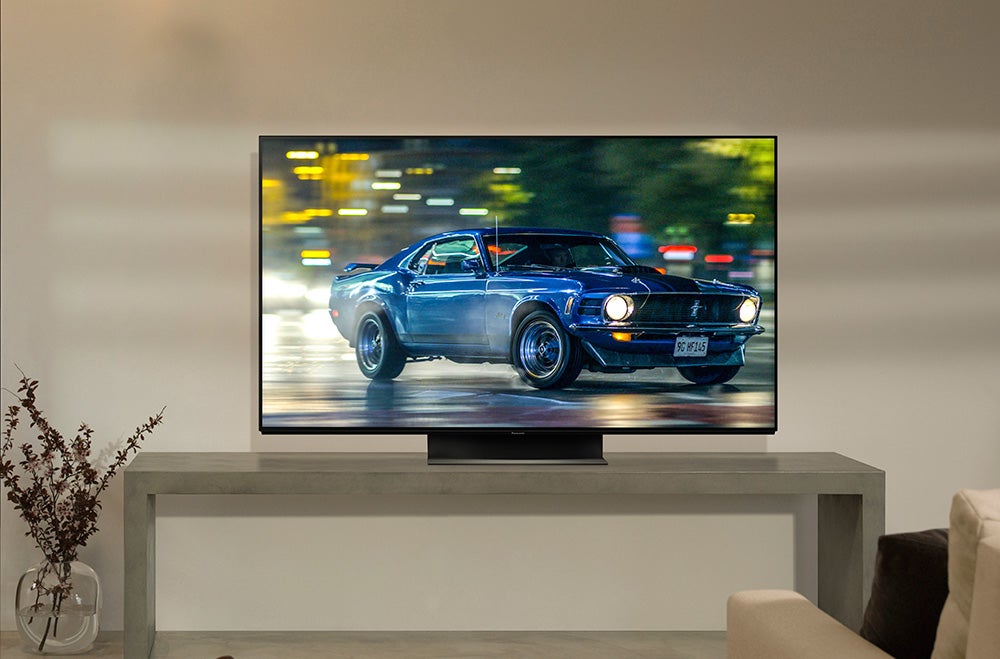
While the TV is able to decode a Dolby Atmos bitstream, it doesn’t have the sonic wherewithal to make much of the codec. But you can pass it out over ARC audio connection to a waiting AV receiver or Dolby Atmos soundbar.
The screen’s general audio performance is fine. Total power output is rated at 50W. In addition to moderate volume, it doesn’t sound shrill – still, a screen of this calibre deserves proper wraparound audio, so budget for a separate sound system.
Related: Best soundbars
Should I buy the Panasonic TX-65GZ1000 4K TV?
The fact that the GZ1000 doesn’t represent the zenith of Panasonic’s OLED line should give rival manufacturers pause for thought. It combines sensational image processing with a refreshingly sensible approach to HDR.
HDR10, Dolby Vision or HDR10+, this set plays ball with them all. Only Philips promises the same level of compatibility.
Overall usability is high, and build quality fine. We rate the TX-65GZ1000 as an outstanding premium OLED screen.
How we test televisions
We test every TV we review thoroughly over an extended period of time. We use industry standard tests to compare features properly. We’ll always tell you what we find. We never, ever, accept money to review a product.
Trusted Score
Score in detail
-
Features 10
-
Value 10
-
Image Quality 10
-
Design 8
-
Sound Quality 8
Features
| Size (Inch) | 65 |
| Display Type | OLED |


